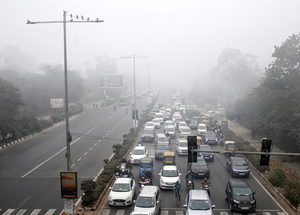New Delhi, Feb 3 (IANS) Delhi’s air quality remained in the ‘very poor’ category, with the Air Quality Index (AQI) recorded at 313 on Monday at 6 am, according to the Central Pollution Control Board (CPCB).
The Indian Meteorological Department (IMD) has issued a yellow alert for dense fog in the national capital, warning of possible disruptions due to reduced visibility. Weather conditions are expected to remain cloudy with light rain or drizzle in the coming days.
Over the past few days, the AQI levels have sharply risen, signalling a worsening trend. This increase in pollution is attributed to a combination of unfavourable meteorological conditions that have compounded the situation.
As of Monday morning, various areas in Delhi reported alarming AQI readings. Anand Vihar recorded an AQI of 357, while Ashok Vihar stood at 335. Other areas such as Jahangirpuri, Punjabi Bagh, Patparganj, and Wazirpur also experienced AQI levels in the range of 322 to 347.
Meanwhile, Vivek Vihar recorded the highest AQI at 359, indicating the severity of the air pollution across the capital. Other locations like R K Puram, Chandni Chowk, and Najafgarh also reported AQI figures above 300, placing them firmly in the ‘very poor’ category.
The factors contributing to the deteriorating air quality include calm winds, changing wind directions, smog, and reduced mixing heights. Additionally, a layer of dense fog enveloped parts of Delhi on Monday morning, further aggravating the already critical situation. This fog has led to reduced visibility and trapped pollutants, worsening the air quality.
The shift in the weather pattern is attributed to an active weather disturbance. According to IMD forecasts, temperatures in Delhi will range between 22 degrees Celcius during the day and 9 degrees Celcius at night.
Looking ahead, the Air Quality Early Warning System for Delhi predicts that the AQI will remain in the ‘very poor’ category for the next few days, particularly from February 3 to 4.
The ongoing pollution levels are expected to continue to affect the health and well-being of residents, making it crucial to stay informed and take necessary precautions.
–IANS
rs/
